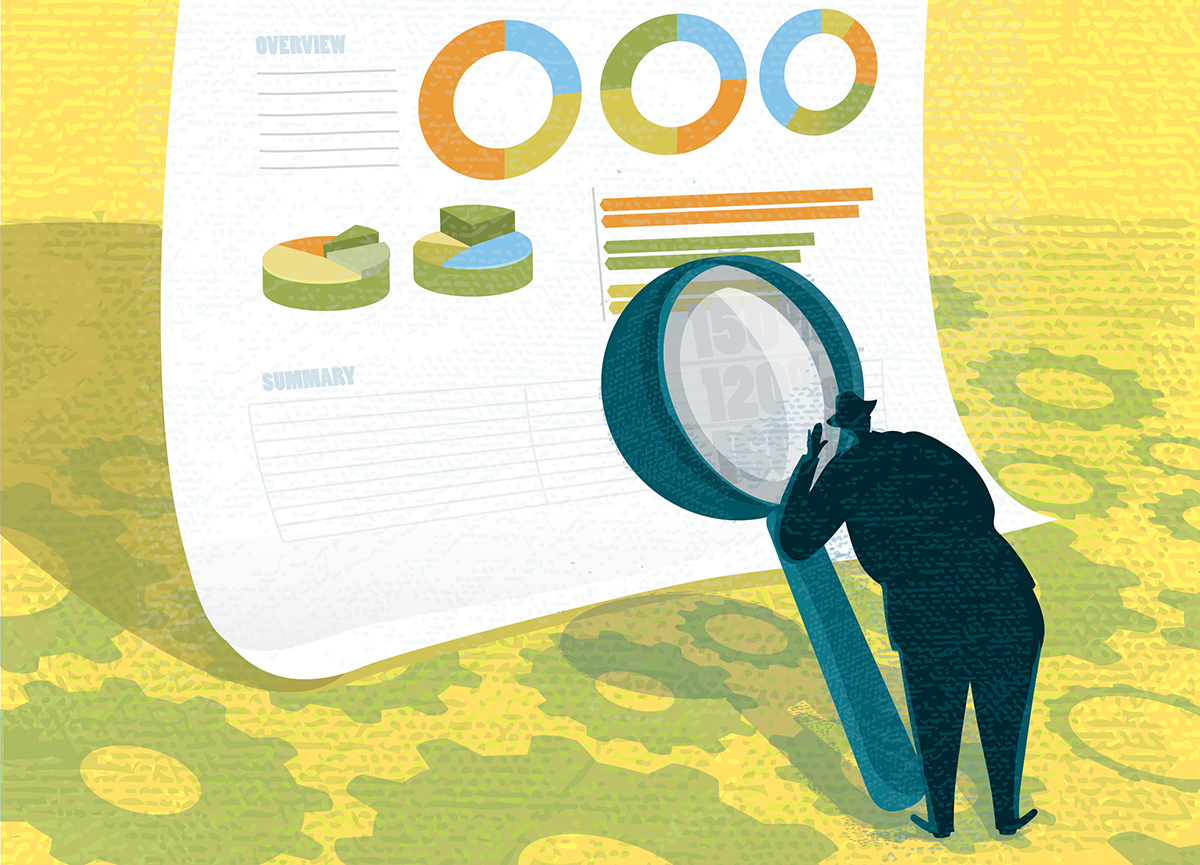 Denizens of the world of corporate finance can be forgiven for seeming even more frazzled than usual. We are on the cusp of a landscape-altering change in how revenue is recognized, in the form of the soon-to-be-effective governing guidelines embodied in ASC 606, "Revenue from Contracts with Customers." And most companies are nowhere near ready.
Denizens of the world of corporate finance can be forgiven for seeming even more frazzled than usual. We are on the cusp of a landscape-altering change in how revenue is recognized, in the form of the soon-to-be-effective governing guidelines embodied in ASC 606, "Revenue from Contracts with Customers." And most companies are nowhere near ready.
This new accounting law of the land, issued by the Financial Accounting Standards Board (FASB) in conjunction with IFRS 15 from the International Accounting Standards Board (IASB), replaces all current industry-specific guidance on revenue recognition with a single, converged model built upon one core principle: Companies must recognize revenue when goods or services are transferred to the customer.
These changes must be adopted by public companies for all annual reporting for periods that begin December 16, 2017, or later. Private companies have an additional year. Still, all businesses should be well under way with their preparations. Unfortunately, that does not seem to be the case.
Recommended For You
A number of recent studies, including the latest collaborative survey by PwC and Financial Executives Research Foundation (FERF), found that the majority of corporations across the United States either haven't started transition plans for the new guidance or have yet to complete an assessment of the new standard's impact. The PwC/FERF study, derived from an online survey of more than 700 accounting and finance executives less than a year ago, found that:
- Only 13 percent of all companies were under way in implementing the new guidance.
- Nearly two-thirds (65 percent) were still assessing the new standard's impact.
- Almost half (47 percent) of private-sector businesses hadn't even started an impact assessment.
- And more than half (52 percent) of all companies were still deciding on an adoption method (e.g., full retrospective, modified retrospective) for transitioning their financial reporting to the new standard.
These numbers add up to one scary realization: Most organizations today still don't have a clear grasp of how this change will impact them.
The wholesale replacement of nearly all current, industry-specific revenue recognition requirements under both International Accounting Standards and U.S. GAAP means "IFRS 15/ASC 606 will change the way private, public, and nonprofit organizations manage business processes, earnings statements, and internal control over financial reporting," according to an FEI Daily article on the PwC survey. The article equated the time left before the new guidance takes effect to a ticking doomsday clock.
Companies that fail to comply with the new revenue recognition rules may face fines, restatements, cratering investor confidence, and accompanying valuation drops. It's important for all key finance stakeholders, including treasury professionals, to grasp just what the changes mean for their financial statements. Here's an industry-agnostic guide to five aspects of ASC 606 that every finance professional should know.
1. Understand the definition of a performance obligation.
Under ASC 606, an entity "recognizes revenue to depict the transfer of promised goods or services to customers in an amount that reflects the consideration to which the entity expects to be entitled in exchange for those goods or services." The rule lays out a new five-step process for customer-contract revenue recognition, which shifts the focus on transfer of control, as opposed to transfer of risk and rewards.
 In this five-step process, step two is identifying the performance obligation(s), the selling entity's promise to transfer some kind of good(s) or service(s) to its customer. A performance obligation can be explicitly stated in the contract, or it can be implied—such as by customary business practices or by policies published outside the contract. However, an activity is not considered a performance obligation unless it transfers a good or service to a customer.
In this five-step process, step two is identifying the performance obligation(s), the selling entity's promise to transfer some kind of good(s) or service(s) to its customer. A performance obligation can be explicitly stated in the contract, or it can be implied—such as by customary business practices or by policies published outside the contract. However, an activity is not considered a performance obligation unless it transfers a good or service to a customer.
Performance obligations play a significant role in determining when, and how much, revenue will be recognized; thus, identifying how a contract's goods and/or services comprise its performance obligations is crucial. To allocate a portion of the contract's transaction price to a specific performance obligation (step three in the revenue recognition process), one of the following needs to be true:
- The good or service (or bundle of goods or services) must be distinct, or
- The good or service must be part of a series of distinct goods or services, which are essentially the same or have the same transfer pattern to the customer.
What makes a good or service distinct? Two things: First, the customer must benefit from the good or service, either on its own or together with other resources readily available to the customer. And second, the promise to transfer the good or service must be identified separately from other promises in the contract.
Consider the example of Company X entering into a three-year contract, worth $36,000, with an IT firm that provides access to a software service. The IT provider's standalone selling price is $12,000 for a year of service, with services provided the same time each month. In this instance, the services provided by the IT company are considered to be distinct services meeting the two qualifications of (1) being essentially the same system services provided each month and (2) having the same pattern of transfer to the customer, that being the passage of time with services provided per month.
Or, let's say a manufacturing firm contracts with a client to provide services that result in the production of 100 widgets over a five-year period. If the service provided by the manufacturing firm in producing each of the 100 widgets uses the same cost-based measure of progress and is satisfied over time, then that service would be considered distinct.
If a good or service is not distinct, then it would need to be combined with other goods and services into a bundle that could be considered distinct. Examples of non-distinct services include custom software development and one-time fees associated with the start of a subscription.
Once a contract's performance obligations have been satisfied, the selling company can recognize the revenue either over time or at a single point in time. To be considered "satisfied" over time, a performance obligation must meet at least one of the following criteria:
- The customer receives and consumes the benefit at the same time that the selling entity is performing the activity underlying the performance obligation;
- The performance obligation activity either creates or enhances an asset under control by the customer; and/or
- The asset created through the performance obligation activity has no alternative use to the selling entity, which has an enforceable right to payment for performance.
If none of the over-time criteria is met, the performance obligation is satisfied and revenue is recognized at a single point in time. Indicators that control has transferred for point-in-time performance obligations include shipment, delivery, acceptance, and consumption.
A common example that illustrates the difference in recognition between today's guidance and ASC 606 is an on-premises, term-based software contract. Under current accounting rules, such a contract is viewed as a single unit of accounting, as it includes maintenance during the term for which the entity doesn't have VSOE (vendor-specific objective evidence). All revenue would be recognized ratably over the term. Under ASC 606, however, the same software contract will be considered to encompass two performance obligations: the license portion and the support. The license will be recognized up front at delivery, while the support will be delivered—and recognized—over the term.
Corporations need to reassess their business operations to determine their typical performance obligations according to ASC 606. It would not be wise to assume that every line item listed in an order form is a distinct performance obligation, and the company may not be able to recognize revenue separately for each line item. Performance obligation-based revenue recognition is the basis of the new standard. Understanding your company's performance obligations is crucial.
2. Know your disclosures.
As ASC 606 implementation approaches, corporations need to prepare to provide enhanced disclosures. In this new environment, disclosures will focus on the nature, amount, timing, and uncertainty of revenue and cash flows from contracts with customers. Thus, every corporation should brace itself to disclose more information than was previously required.
Although your company may still be determining the interpretation of the standard for some of your particular use cases, it is crucial to go ahead and determine what disclosures are necessary for your organization under the rules, and to determine whether that data currently exists in a usable form within the organization. Doing so will help ensure that you can properly comply with the new requirements when necessary.
Under ASC 606, disclosure requirements will be more forward-looking with regard to the types of obligations and amounts involved in each contract, and these figures may affect the business's financial reporting. Historically, revenue disclosures in financial statements have been minimal, essentially satisfied by describing the delivery of goods or services and establishing a price. To meet the new objective of understanding not just amount and timing, but also the nature and uncertainty of revenue and cash flows, entities going forward will need to provide qualitative and quantitative information on all contracts, including the estimates and judgments used to measure revenue and specifics of any recognized assets related to the costs of obtaining the contracts. These beefed-up disclosures will be required to be presented for each reporting period for which a statement of comprehensive income is presented.
Since the standard itself doesn't provide examples of suggested disclosure formats, this could allow for entities in specific industries to establish best-practice approaches to these required disclosures over time.
Companies will also need to be prepared to respond to disclosure questions relating both to regulatory relationships, such as reporting requirements to financial institutions for loans, and the reliability of the information required under the new standard. It's quite possible that the required data will need to be pulled from multiple systems or platforms.
3. Realize that the impact of the new guidance goes beyond financial statements.
Consider it a given that ASC 606 will impact more of your business than just the financial statements. Companies should already be looking at comparative sets of financials to see how current actuals compare with how they'll look when ASC 606 becomes effective, and that analysis should not be confined to the corporate revenue line.
Let's say a company's revenue was $100 million under one guidance and $90 million under another guidance. These top-line numbers don't provide enough information for the finance team to be sure they're prepared to report accurately under both sets of rules. To provide an effective comparison, dual reporting requires an all-encompassing effort. Finance staffers need to dig deeper, to study all balances under each guidance. Did cost change along with the revenue? Under the new guidance, does the company now have a contract asset balance it must report? Does the company have any variable consideration that needs to be considered up front in its contracts? What is the makeup of the company's contract balances? These are just a few examples.
Consider the transition to ASC 606 to be an opportunity. Dual reporting under each guidance is the chance for a company to verify that anything touched—and/or changed—by ASC 606 is double- and triple-checked. Do not stop asking yourself the question: What would our financial statements look like under one guidance versus the other guidance? Chances are, the answer goes much deeper than the difference in revenue.
4. Understand the variability of usage-based pricing.
In today's world, in order to recognize revenue, the price must be either fixed or determinable. When a customer is charged based on usage or consumption, the price is generally not recognized until realized, which results in revenue recorded over the entire arrangement. Under ASC 606, corporations will be expected to estimate, in advance, the amount they will receive from the customer and allocate the subsequent transaction price across all the performance obligations in the contract. They will then recognize the revenue as each performance obligation is satisfied.
Under current accounting practices, usage-based pricing implies that a customer will be billed and revenue will be recognized based on actual usage. With the coming new guidance, the scenario shifts. Consider an annual contract for Company Z to supply widgets to a customer, who agrees to pay $10 for first 1,000 widgets, pay $8 for widgets number 1,001 to 2,000, and pay $7 for any widget over 2,000. The entity needs to estimate how many widgets the customer is going to buy over the life of the contract and recognize revenue at a constant revenue-per-unit amount.
Perhaps when the contract is signed, Company Z expects the customer to purchase 2,400 widgets, which equates to $20,800, or $8.67 per widget. The company will recognize revenue at a rate of $1,733 per month, so six months in, it will have already recognized $10,400 for the widgets purchased over the first six months. Consider a scenario in which the customer purchases only 900 widgets over the first six months, and the company expects it to continue purchasing at the same rate for the rest of the year. Because the company now projects that the customer will purchase only 1,800 widgets over the course of the year, it expects annual revenue from this customer of $16,400, with an average price per widget of $9.11. Company Z will need to true up its revenue recognition with a negative adjustment of $2,200 and now recognize only $1,367 monthly thereafter.
In a nutshell, companies must now take into account the variable consideration of a contract, and do so before the variable charges are incurred.
5. Be ready to change terminology when it comes to selling bundles.
How a business describes the selling of bundles—a grouping of different goods or services into one offer—is about to change with ASC 606. With the advent of the new guidance, the terms VSOE, BESP (best estimate of selling price), and multiple-element arrangements move aside for new bundling terminology such as standalone selling price (SSP) and allocating the transaction price.
The standalone selling price is the price at which an entity would sell a promised good or service separately to a customer. Under the new revenue standard, the following rules apply to determining a service's standalone selling price:
- First, you need to look at observable evidence (i.e., examples of the good or service sold by itself).
- If observable evidence does not exist, any reasonable estimation method is allowed.
- ASC 606 applies the same guidance across all transactions, throughout all industries. This removes the need for industry-specific guidance on stand-alone selling price.
- The residual estimation method can be applied to all transactions meeting the new standard requirements, rather than a very specific allocation methodology. SSP can be estimated using a residual approach for any performance obligation that is not sold standalone or is highly variable. In the existing standard for software, the residual allocation method could be used only for delivered elements when all undelivered items had VSOE.
These changes are expected to result in a much more consistent application, across industries, of standalone selling price guidance. Most companies' process for estimating standalone selling price won't change dramatically, since the new standard aligns with current practices. However, some industries, such as software, can expect a fairly significant shift in the process of estimating standalone selling price. That change could lead to recognizing more revenue in an earlier time period.
 Jagan Reddy is senior vice president of RevPro at Zuora. He joined Zuora in May 2017 following the company's acquisition of Leeyo, which he co-founded in 2009. In that capacity, Reddy was responsible for Leeyo's overall corporate leadership and product development. Prior to founding Leeyo, he spent 14 years as an IT professional in the software and high-tech industry, with specialized expertise in ERP and financial systems development and integration.
Jagan Reddy is senior vice president of RevPro at Zuora. He joined Zuora in May 2017 following the company's acquisition of Leeyo, which he co-founded in 2009. In that capacity, Reddy was responsible for Leeyo's overall corporate leadership and product development. Prior to founding Leeyo, he spent 14 years as an IT professional in the software and high-tech industry, with specialized expertise in ERP and financial systems development and integration.
© 2025 ALM Global, LLC, All Rights Reserved. Request academic re-use from www.copyright.com. All other uses, submit a request to [email protected]. For more information visit Asset & Logo Licensing.




